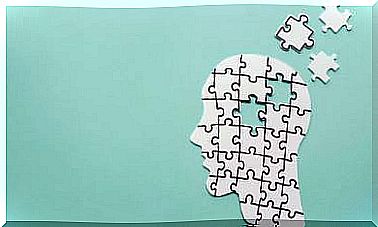Body, Mind And Meditation: How Do They Interact?

The literature on meditation and its benefits is extensive. Learning to meditate has gone from being a novelty brought from the East to becoming a common habit for many Westerners. And it is that there is a close relationship between body, mind and meditation.
The innumerable advantages that this practice offers to those who train daily are many, but today we want to talk to you about how and why it works. That is, what are the changes that occur in the brain and in the body through constant practice.
To understand the relationship between body, mind and meditation, that is, how meditation shapes the brain and how this modeling influences our emotions and our body, there are some technical questions that must be known. Let’s see them.

Welcome to the fascinating world of the brain
We are going to open the door of our brain to explain what areas participate in meditation and how they work.
- The lateral prefrontal cortex is the brain structure that allows us to have a more rational perspective. The lateral prefrontal cortex participates in the modulation of emotional experiences and slows down the tendency to take things personally. It is known as the Evaluation Center.
- The medial prefrontal cortex is the part of your brain that constantly talks to you about you, your experiences, your ideas, your experiences. Process all the information related to you and your relationship with others. We know it as the “me” Center or Self-Reference Center. It is made up of two sections: one that participates in increasing rumination and concern. And another that is very important for empathy.
- The insula is the part of the brain that controls bodily sensations, experiencing emotions at the intestinal level. The insula is part of the system linked to modulating the level of response to what your body is feeling.
- The amygdala is our organic alarm system. Also known as the Center of Fear, it is linked to the fight or flight response in situations that are perceived as dangerous.
How a brain that does not meditate works
A brain that does not meditate usually has strong neural connections between the Center of the “me” and the body centers of feeling of fear . A brain that does not meditate can often feel “stuck in me” because it has a great dependence on this center. In this case, it is the “my” Center that is processing most of the information received.
This reliance on the “me” Center explains why we get caught up in negative thought loops. And this happens because the connection between the Center of “me” and the Center of evaluation is weak.
When we increase the work capacity of the Assessment Center, the excessive activity in the part of the Center of the “me” that takes things personally decreases. It also improves the activity of the part involved in understanding the feelings of others. This is the way to assimilate all the information received, discarding erroneous data, reducing excessive thinking and worry.
The brain in meditation
Several things happen in a brain that meditates regularly . The connection between the Center of “me” and the bodily centers of fear begin to break. This lowers the strength of the fear response and partly explains why anxiety decreases when you meditate regularly.
Rather, a stronger neural connection is created between the Assessment Center and the centers of bodily sense of fear. This means that when a bodily sense of fear of something potentially dangerous reaches the brain, it can evaluate it more rationally rather than automatically react to fear. Furthermore, it reduces the likelihood of getting caught up in a continual production of hypotheses about what “could be or mean” what is happening to me.

Empathy, the added bonus
In a brain that meditates on a regular basis , there is a significant increase in the connections between the Center of the “me” and the Center and the center of bodily sensations related to empathy, and we activate the part of the brain involved in the real experience of empathy: the insula. In this way, we become better able to infer other people’s mental states, their desires, dreams, and motivations.
Body, mind and meditation
The decrease in negative emotions seems to directly influence the immune system. In addition, regular meditation practice slows the heart rate and widens the blood vessels.
There are studies that link transcendental meditation to lowering blood pressure. The endocrine system also benefits. When you meditate, you release endorphins, the so-called happiness hormones. Thus, you manage to maintain the levels of the stress hormone at an adequate level.
For those who are starting their adventure in the world of meditation, our advice is to do it with professionals and be constant. We talk about harnessing our neuroplasticity through habit and daily practice.









